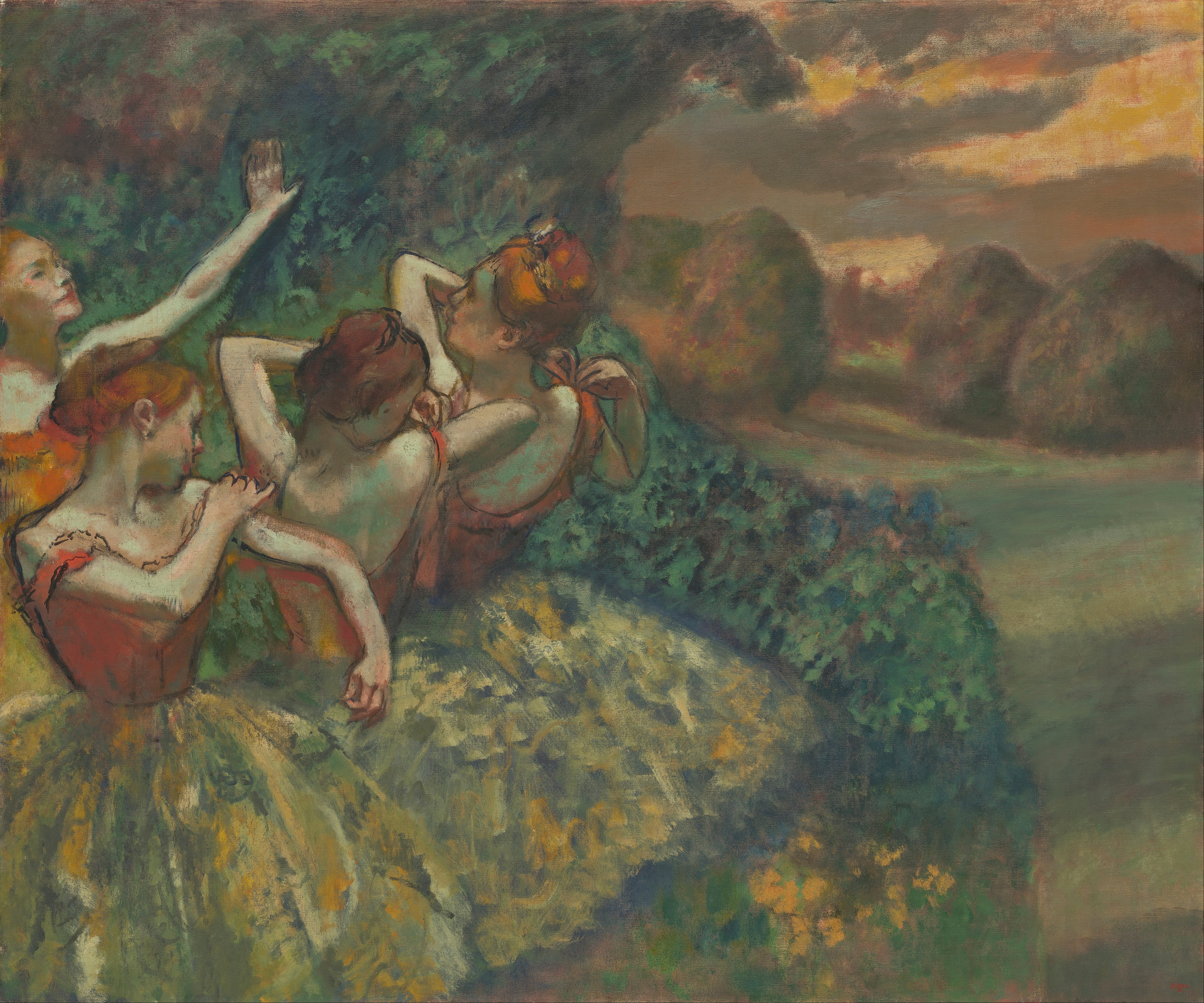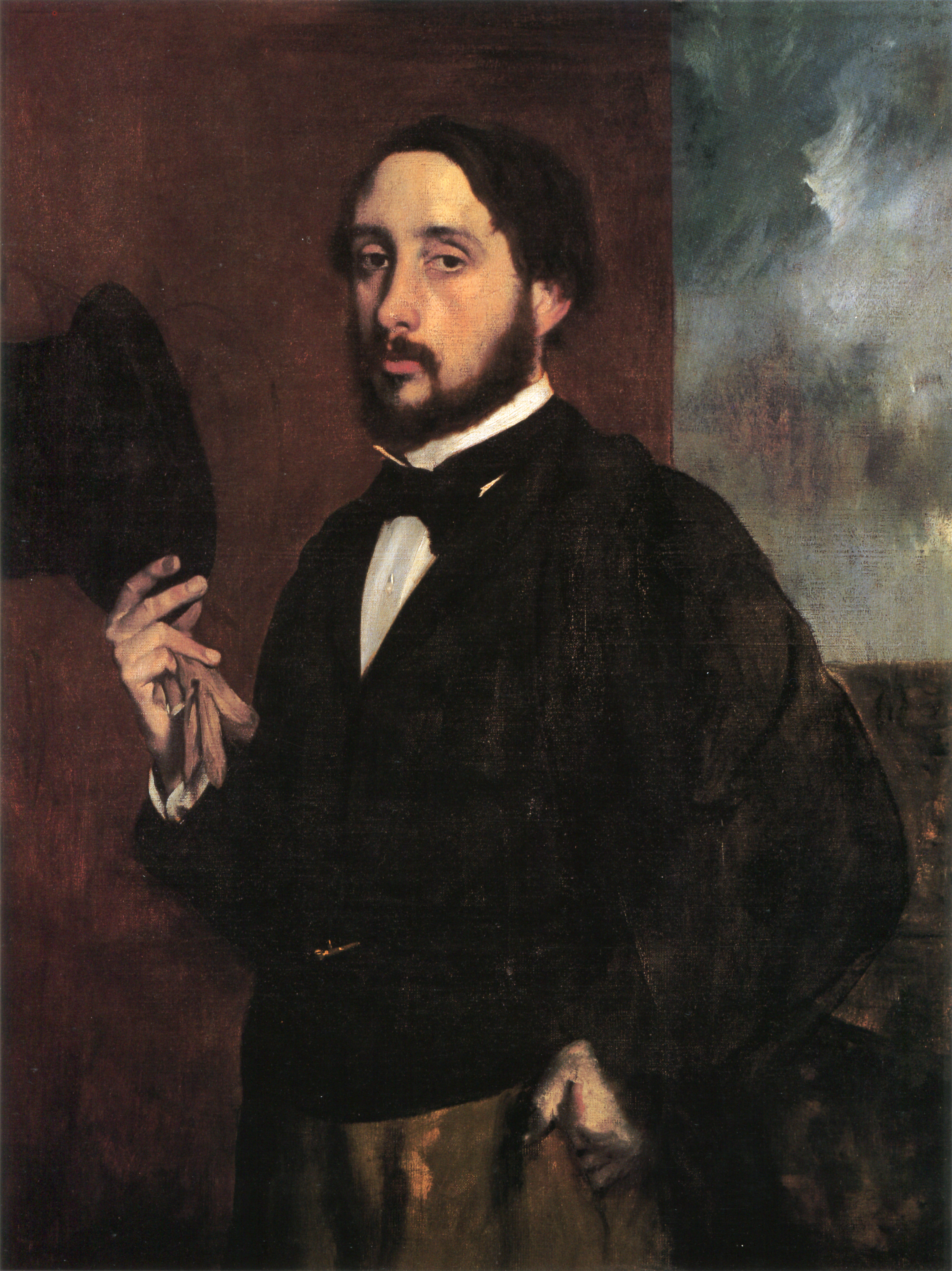Degas studied his preferred subject, ballet performers, in hundreds of works. Four Dancers, one of the largest and most ambitious of his late works, exists in several variants that show different kinds and degrees of modification. While Degas suppressed descriptive detail elsewhere in the painting, emphatic dark lines shape the heads and arms, underlining the artist's formal concerns. Theatrical lighting over the off-stage performers recolors the figures and creates a simple color scheme of complementary red-orange and green hues. Two of the figures repeat poses of a model who appears in a unique set of three photographic negatives. Shot between about 1895 and 1898, the original plates solarized into colors that resemble, in reverse, the oranges and greens in Four Dancers. Degas owned the photographic plates and may even have taken the pictures. The same model, hair piled on her head and features indistinct or hidden, posed for all three photographs, and the four dancers in the painting resemble her. Eadweard Muybridge’s sequential photographs may also have influenced the arrangement of the four dancers, particularly his 1887 book, Animal Locomotion. Their poses, a succession of preparatory gestures, depict a progression of intricate movements.




Four Dancers
oil on canvas • 180 x 151 cm
 Edgar Degas
Edgar Degas